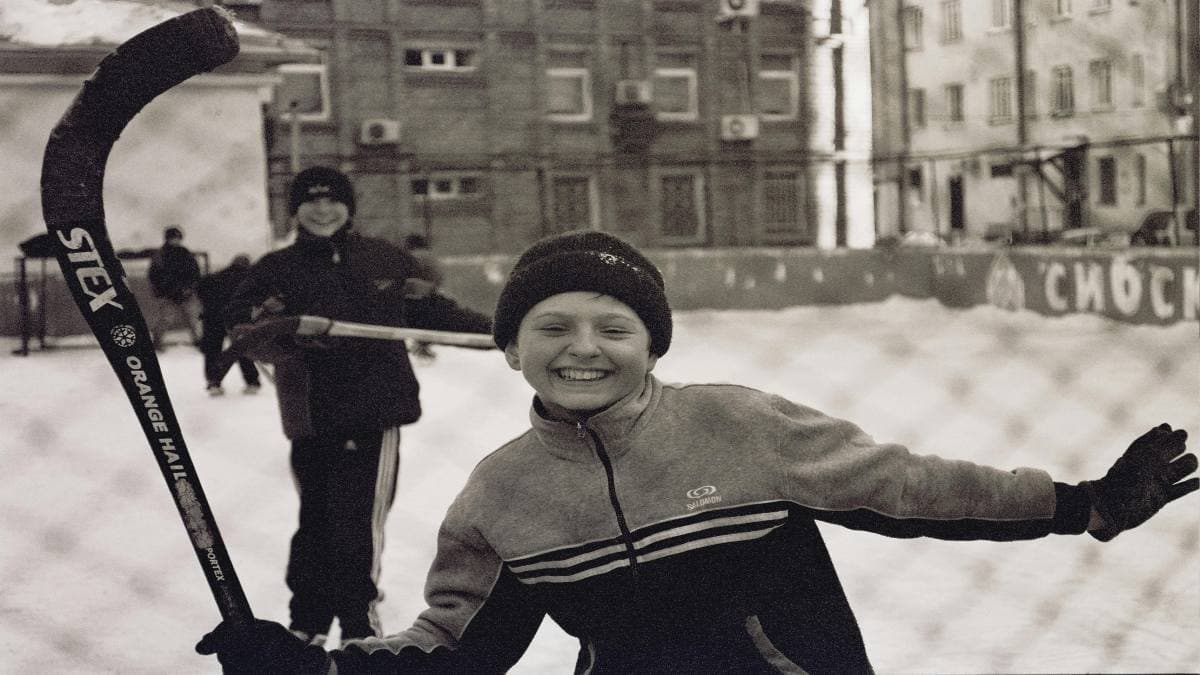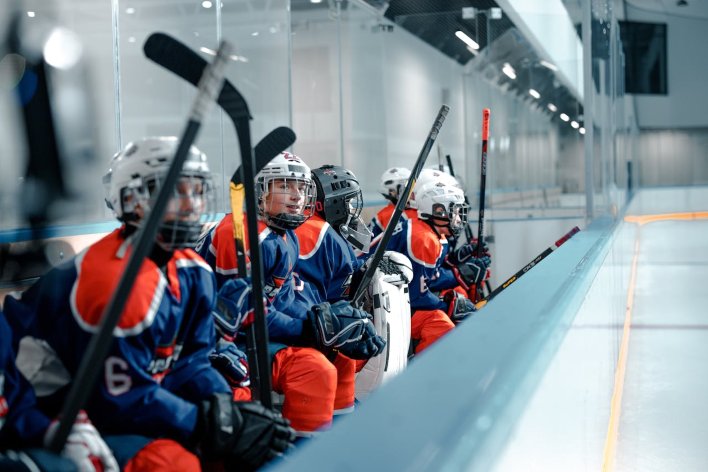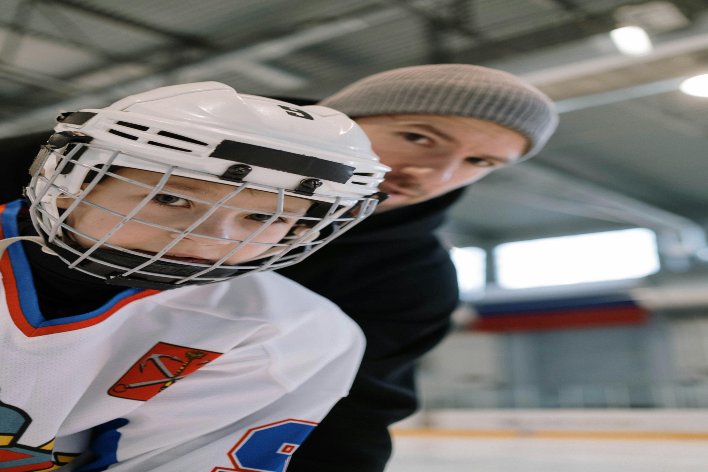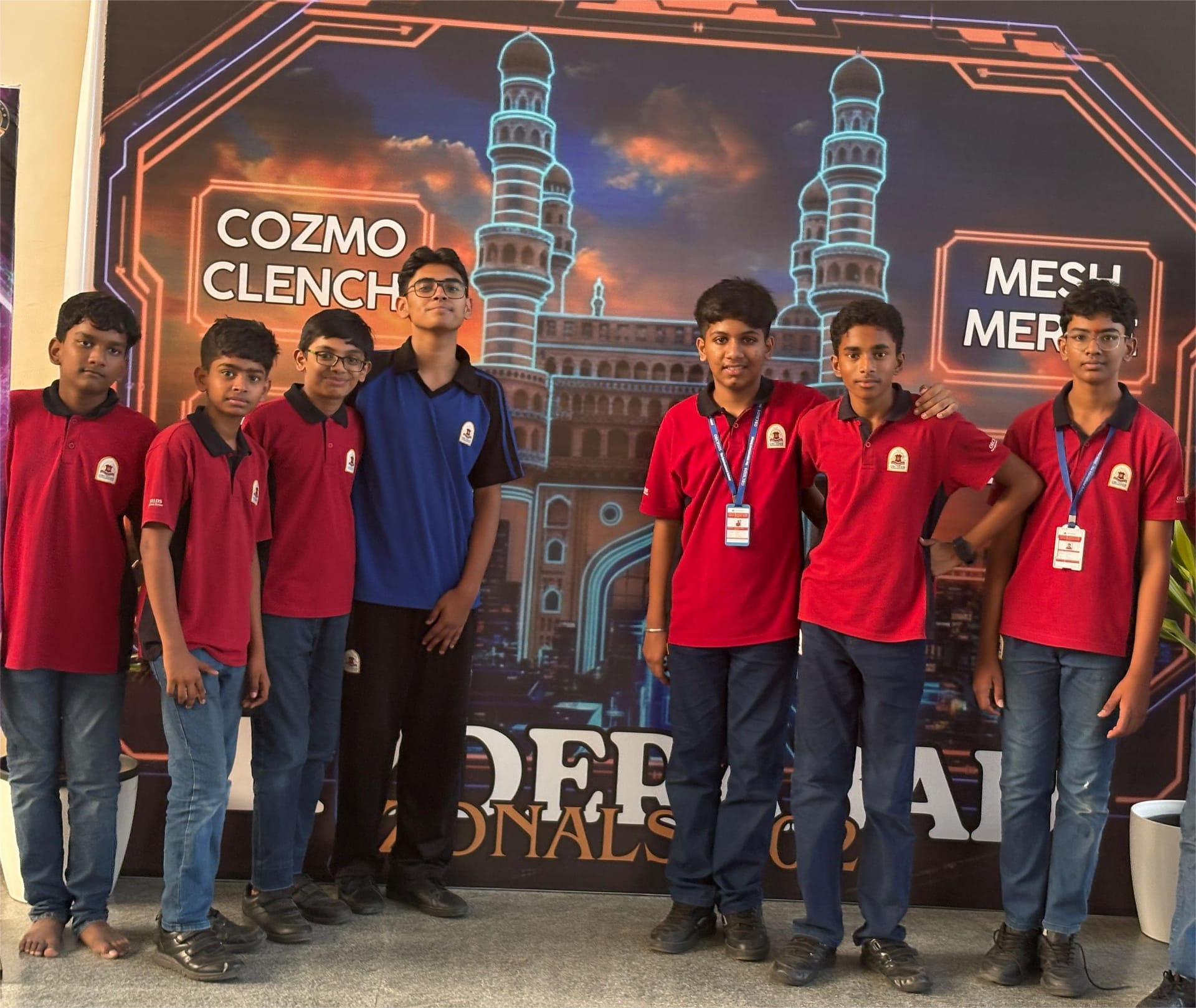Why is hockey a popular sport for kids
By Pinkey Sharma |
Date 07-08-2024

Table of Contents
- Why is Hockey a Popular Sport for Kids?
- What are the Benefits of Kids Playing Hockey?
- Physical Benefits:
- Mental Benefits of playing Hockey:
- Social and Emotional Benefits:
- Getting Started in Kids Hockey
- Advanced Development and Competitive Opportunities
- Coaching and Developmental Support
- Safety and Injury Prevention
- Mental and Emotional Well-Being
- Conclusion
- FAQ’S
Admissions Open for
Hockey is a popular sport for kids for numerous reasons, making it a top choice for young athletes and their families. From the thrilling fast-paced action of ice hockey to the strategic play of field hockey, these hockey programs offer a range of benefits that appeal to children of all ages. Engaging in a hockey training program can enhance physical fitness, foster teamwork, and build character. As families search for the best hockey program for their kid, the sport’s inherent excitement and developmental advantages make it a compelling option for fostering a lifelong love of sports and healthy activity.
Why is Hockey a Popular Sport for Kids?
Hockey remains one of the most exhilarating and skillful games in the world, inspiring the imagination of kids with its breakneck speed and the friendship built within the game. In its two main variants, on the ice and on grass, hockey builds up an excellent combination of physical fitness, strategic thinking, and teamwork in young athletes. This prolonged exposition elaborates on some of the reasons hockey is loved by kids and furnishes different health, mental, and social advantages that this sport instills in children.
-
Fast and Dynamic Game Play: Hockey is, therefore, quick movement that calls for players running, passing with strokes, shooting, and defending at any point in time. The kids, therefore, find it a game that will interest and absorb them because of its speed and agility—be it artificial grass or turf.
-
Skill Development: Hockey offers various activities that help children to develop some of the basic skills in athletics, such as ice skating in ice hockey, stickhandling, passing, shooting, and spatial awareness. All these activities will improve physical coordination and mental development through strategic thinking and decision-making in a pressurized environment.
-
Teamwork and Social Interaction: Since hockey is a team game, it automatically demands that its players be social, communicate freely, and intermingle with fellow colleagues. It will teach your child techniques of collaboration toward common goals, how one supports fellow colleagues, and forged lasting friendship bonds both on the pitch and outside it.
-
Physical Fitness: Playing hockey improves one's cardiovascular endurance, strength, agility, and overall physical fitness. A player must use multiple muscles simultaneously while developing his stamina or endurance through constant practice and competitive matches.
-
Accessibility and Community: Hockey is a sport accessible to every child, regardless of age or ability. Community leagues, school teams, and recreational programs provide ample opportunity for children to learn and play. Where the sport enjoys huge cultural following, like in most parts of Canada and the United States, and parts of Europe, usually children start playing at an earlier age due to family influence or community pressures.
-
Cultural and Regional Influence: In countries deeply steeped in the culture and tradition of hockey, such as Canada, it becomes imbued into national identity. Other factors—like local clubs, youth programs, community events, and so on—go on to strengthen the charm and participation by young athletes in this sport.

What are the Benefits of Kids Playing Hockey?
There are loads of benefits involved in playing hockey that help children in developing holistic development: physical, mental, emotional, and social.
Physical Benefits:
Cardiovascular Fitness:
The nature of the game is uninterrupted movement, thus developing cardiovascular endurance and strengthening the heart for the future. Skating across a field of play in ice hockey or running in field hockey keeps players at task in aerobic capacity and ensures overall physical conditioning.
Strength and Muscle Development:
Skating with skates in ice hockey or dribbling with a stick in field hockey involves the major muscle groups such as the legs, core, and upper body. The physical demands of the game with respect to both training and playing contribute to strength, muscle development, and increased muscular endurance.
Agility and Coordination:
Ice hockey requires quite a number of precise movements, which make up many various actions like skating, stickhandling, passing, and shooting, thus increasing equilibrium, coordination, and fine motor skills in young athletes. To master these skills means to enhance general athletic performance and be more agile and spatially aware on the playing field.
Endurance and Stamina:
All the hockey practices and games help develop stamina and increase endurance to play through matches, tournaments, and competitive seasons without fading. A sport as demanding as this instills resilience and physical toughness in young athletes working toward being the best they can be.
Mental Benefits of playing Hockey:
Cognitive Skills:
Hockey furthers cognitive development in the form of strategic thinking and solving problems by the decisions that are made during fast-paced situations in the game. This will help players learn how to expect plays, read opponents, and create tactics that can help the team be successful on the ice or the field.
Focus and Concentration:
The focus of the young athlete on the puck or ball during the play and by anticipating the plays, builds concentration, mental alertness, and attention to detail. It is important to be focused and concentrated for the entirety of practice and games in hockey.
Emotional Regulation:
Playing hockey enables children to develop emotional strength, sportsmanship, and control over their feelings during contests. This is how players learn to lose or win graciously, deal with setbacks, and celebrate as a team—all working toward positive emotional well-being and personal growth.
Social and Emotional Benefits:
Teamwork and Communication:
Hockey brings with itself team effort, communication, and cooperation among the players, coaches, and staff. That means a child is going to learn working together toward shared goals, standing up for colleagues, and being leaders in a way that rubs off into their interpersonal relations both on and off the ice or field.
Sportsmanship and Fair Play:
Playing hockey inculcates in the young athlete concepts of sportsmanship and integrity toward the practice of fair play. It teaches respect toward opponents, officials, and the rules of the game—those things that set a benchmark for ethical behavior and respect for oneself and others in any competitive setting.
Self-Confidence and Self-Esteem:
Attainment of personal objectives, development of skills, and contribution towards team success build self-confidence and self-esteem in the young player. Playing hockey offers challenges to children when facing obstacles. It develops resilience in the child through perseverance and commitment to continual improvement.
Social Interaction and Friendship:
Hockey leagues, tournaments, and community activities provide for social interaction, camaraderie, and friendship defragmentation among young athletes. Teammates bond with each other on these shared experiences and enjoy times of success together, forming lifelong connections that truly extend beyond the playing field.

Getting Started in Kids Hockey
Introduce young kids to hockey in such a way that it will be a positive, enjoyable experience for young athletes and their families through proper planning, preparation, and support.
Age and Readiness: Children can begin basic hockey skill development as early as preschool age through introductory programs, beginner clinics, and informal play. Age for entering organized programs is generally from 5 through 7 years of age due to factors such as community resources, availability of ice rinks, and parental readiness to support a child becoming involved in the sport.
Equipment and Gear: Required hockey equipment will vary between ice hockey and field hockey; however, for the majority, required equipment will consist of skates (if playing ice hockey), hockey stick, helmet with full facemask, gloves, shinguards, elbow pads, mouth guard (very strongly recommended), proper athletic footwear and athletic clothing. Properly fitted equipment should provide safety, comfort, and optimum performance through practices, games, and competition.
Skill Development and Training: At the novice level, instruction will be focused on basic hockey skills, which include skating techniques of ice hockey, stickhandling, passing, shooting, and defensive positioning. Coaches/instructors utilize age-appropriate drills, skill development exercises, and gameplay simulations to be an instructive lead-in to teach the basic skills in an entertaining environment that enhances good sportsmanship and teamwork.
Local Programs and Youth Leagues: Most communities have their youth hockey programs through a local ice rink, community center, school, or recreating organization. Such programs offer structured coaching, skill development clinics, practice sessions, and involvement in local leagues, tournaments, and competitive events for specified age brackets and skating levels.
Parental Involvement and Support: Parents support a young player's hockey experience by being encouragers, attending practices and games, ensuring proper maintenance and fitting of equipment, and fostering an attitude that values sportsmanship, teamwork, and skill development. Active parent involvement provides the best atmosphere for support of the learning environment, enhances motivation of the players, and encourages a lifelong commitment to hockey as a recreational activity or competitive endeavor.
Advanced Development and Competitive Opportunities
As children continue in hockey and their interest in the sport grows, they may become involved in advanced development opportunities and competitive pathways.
Youth Hockey Leagues: Local youth hockey leagues offer structured competition, coaching, and skill development at different age and ability levels. These leagues may further be divided into recreational divisions for the beginners or become more competitive to give skilled players more significant competition rates and a better feel for advanced-level playing.
Travel Teams and Select Programs: Advanced players can participate in regional, state, national, and international travel teams, select teams, or development programs that offer a stronger commitment base with more frequent practices, travel for tournaments, and elite competitions against top-ranked teams or the best opponents.
Elite Development Programs: Some of these young athletes will have the chance to become part of elite development programs, academy teams, or even national youth teams related to professional hockey clubs, national governing bodies, or highly recognized hockey academies. This exposes them to specialized coaching, advanced facilities for training, contact with talent scouts and recruiters, and an opportunity to compete at the highest levels of youth hockey either at a national or international level.
College and Professional Pathways: The very best players will have ambition to play in college or professionally. Many will then look for recruitment by college scouts, qualification for athletic scholarships, and junior league opportunities as a way to play at either the college or professional level. As a matter of fact, scholarships are available through college hockey programs to ensure that student-athletes wanting to pursue a higher education and athletic excellence can have those opportunities in a competitive playing environment.
Coaching and Developmental Support
Coaching and developmental support form cornerstones of the hockey experience, which should foster skill development, sportsmanship, and personal growth in each youngster.
Coaching Staff: The program needs experienced coaches and instructors who provide instruction in hockey skills, strategies, and sportsmanship in a supportive, positive learning environment. Coaches use progressive drills, practice plans, and individualized instructions for technical proficiency, tactical understanding, and overall athletic performance for developing young players.
Skill Development and Training Programs: Coaches design programs for the development of skills in skating, stickhandling, passing, shooting, and defensive techniques relevant to the age group and skill level of the player and at the stage of development. On-ice or on-field skill development exercises, competitive drills, and simulated game situations permit players to establish and develop skills while building the confidence to attain individual and team goals in the arena of play.
Sportsmanship and Ethical Conduct: Coaches teach fundamentals of sportsmanship, fair play, and ethical conduct in everything done on and off the ice and playing field. As such, respect is developed for opponents, officials, teammates, and rules of the game, which further exemplifies integrity, responsibility, and positive leadership qualities toward an overall positive team culture and competitive success.
Parent–Coach Collaboration: An open and constructive communication system by coaches and parents brings openness, clarifies expectations, and allows a better hockey experience for young players. Coaches communicate with the parents about the progress of the young player in terms of skill development and competitive opportunities and guide and support them on various issues concerning team dynamics.
Safety and Injury Prevention
A safe and secure playing environment will help reduce the potential for injuries while promoting health among young hockey players.
Proper Equipment and Protective Gear: Players shall wear properly fitted, certified protective equipment, including helmets with facemasks, mouthguards recommended, shoulder pads, elbow pads, gloves, shin guards, and appropriate athletic footwear skates or cleats for ice or field hockey, respectively. Equipment should be regularly inspected for wear and tear and replaced as needed, and fitted for comfort, mobility, and maximum protection to ensure attendance at both practices and in playing games.
Safe playing surfaces and facilities: Well-maintained rinks, fields, and playing surfaces that are hazard-, obstacle-, and environmentally safe ensure the protection of the players and minimize potential injury associated with playing hockey. More specifically, this means that ice rinks should be resurfaced regularly, boards and glass should be securely fastened, and fields should be groomed for safe and healthy play and performance for all.
Injury Prevention and Risk Management: Educate players, coaches, and parents in the avoidance of injuries, how to warm up and cool down, proper hydration and nutrition advice, and ability to recognize the signs and symptoms of sports-related injuries, such as concussions, sprains, and strains, so as to enhance safety awareness and proactive risk management during a hockey season. Coaches should design contingency plans about emergencies, and always be equipped with a first-aid kit that contains all the instruments, including AEDs and training in cardiopulmonary resuscitation techniques so that they may respond correctly during a medical emergency or possible injury in the occurrence of one during practice, games, or tournaments.
Player Welfare and Health Promotion: Attention paid to the welfare, health promotion, and physical conditioning of the player may go a long way in enhancing athletic performance and resilience in young ice hockey players. Coaches, parents, and sports medicine professionals should collaborate in an atmosphere that is supportive toward physical, mental, and emotional well-being for the player through injury prevention programs, recovery strategies, and wellness initiatives that underline a holistic development process for long-term athletic success.
Mental and Emotional Well-Being
This, in turn, aids in the building of a sound mental and emotional well-being, which is the key to a healthy, enjoyable hockey experience for young players.
Positive Learning Environment: Set up an environment that is supportive, inclusive, and encouraging; this helps to make players feel valued, respected, and motivated. The coach would emphasize effort over outcome, celebrate as individuals and a team in their achievements, and give constructive feedback that will build resilience and a growth mindset in young athletes.
Setting targets and achieving them: It will prompt the player to set his sights high, push the limits, and strive relentlessly to achieve improved play. Much as the game may sound like a portrayal of mere physical strength or skills, it is successfully mastered when one builds self-confidence and belief in his/her potential to perform. This happens through challenge embracing, learning from setbacks, and persistence in the face of adversity. It is through such a process that a player will increase in determination, resilience, optimism, and strong self-efficacy both on- and off-ice/field activities.
Training in techniques of stress management: how to deal with certain situations, and the mindfulness exercises will bring emotional balance, clarity of mind, and concentration during practices or games or any type of competitive situation. It develops resilience, adaptability, and emotional intelligence toward pressurizing, falling back, or any sort of hurdling process with grace and confidence.
Supportive relationships and social connection: The development of supportive relations, growth of camaraderie, and team building between players, coaches, and families gives the players a sense of belonging and feeling connected within the hockey program. Players have genuine friends, share memorable moments together, celebrate collective success, and thus develop strong bonds based on mutual respect, trust, collaboration, and sharing of values.
Conclusion
In other words, the sport of hockey is simply loved and enjoyed by children around the world. It offers numerous physical, emotional, mental, and social advantages responsible for the overall development of children as athletes and citizens. From the challenges in gameplay and developing skills to the fun experiences of teamplay and competition, the experiences one gets to gain through playing hockey are incomparable to any other for young players; they come with life lessons and opportunities of personal development in sports and life.
FAQ’S
Why do kids play hockey?
Kids play hockey for the excitement, physical exercise, and the opportunity to make friends and develop teamwork skills.
Why is hockey a popular sport?
Hockey is popular because of its fast-paced action, thrilling competition, and the combination of skill, speed, and strategy that captivates both players and fans alike.
How to explain hockey to a child?
Hockey is a fun game where two teams try to score goals by hitting a puck or ball into the other team's net using sticks, while skating on ice or running on a field.
Ready to start your hockey journey? Sign up now and join our community!
Related Blogs
Getting started in Hockey for kids: Discover essential tips for introducing kids to hockey.
A Comprehensive Guide for Hockey: Choose the ideal hockey program for your child with our detailed guide.
Safety in Youth Hockey: Learn key safety measures for playing safe youth hockey.
CBSE Schools In Popular Cities
- CBSE Schools in Bangalore
- CBSE Schools in Mumbai
- CBSE Schools in Pune
- CBSE Schools in Hyderabad
- CBSE Schools in Chennai
- CBSE Schools in Gurgaon
- CBSE Schools in Kolkata
- CBSE Schools in Indore
- CBSE Schools in Sonipat
- CBSE Schools in Delhi
- CBSE Schools in Rohtak
- CBSE Schools in Bhopal
- CBSE Schools in Aurangabad
- CBSE Schools in Jabalpur
- CBSE Schools in Jaipur
- CBSE Schools in Jodhpur
- CBSE Schools in Nagpur
- CBSE Schools in Ahmednagar
- CBSE School In Tumkur

Call Us to know more about Orchids
Swipe Up


.jpg&w=1920&q=80)













